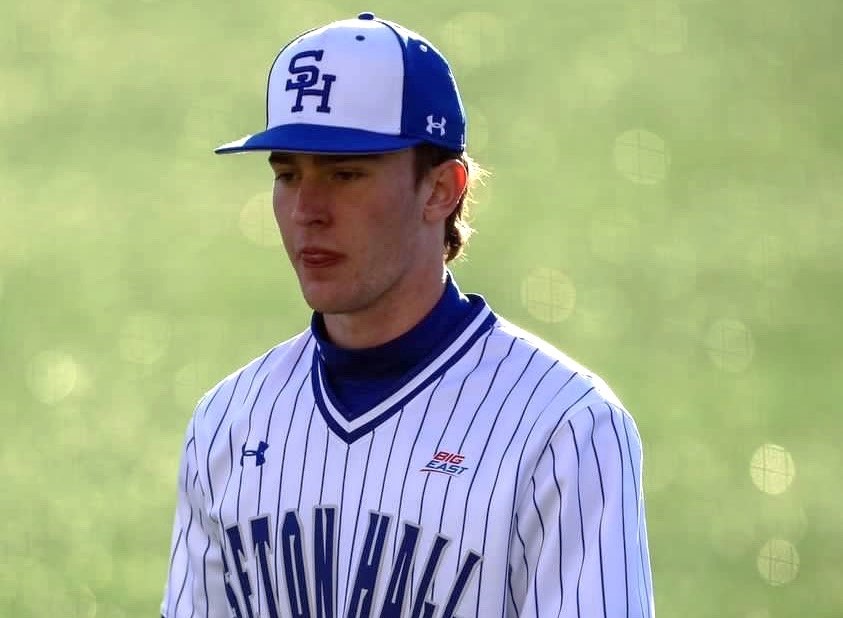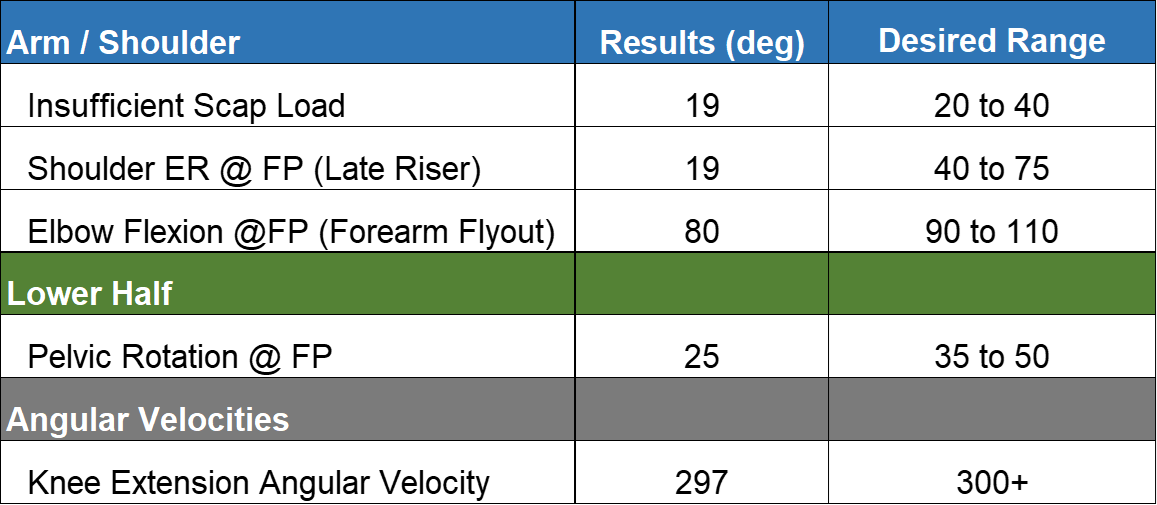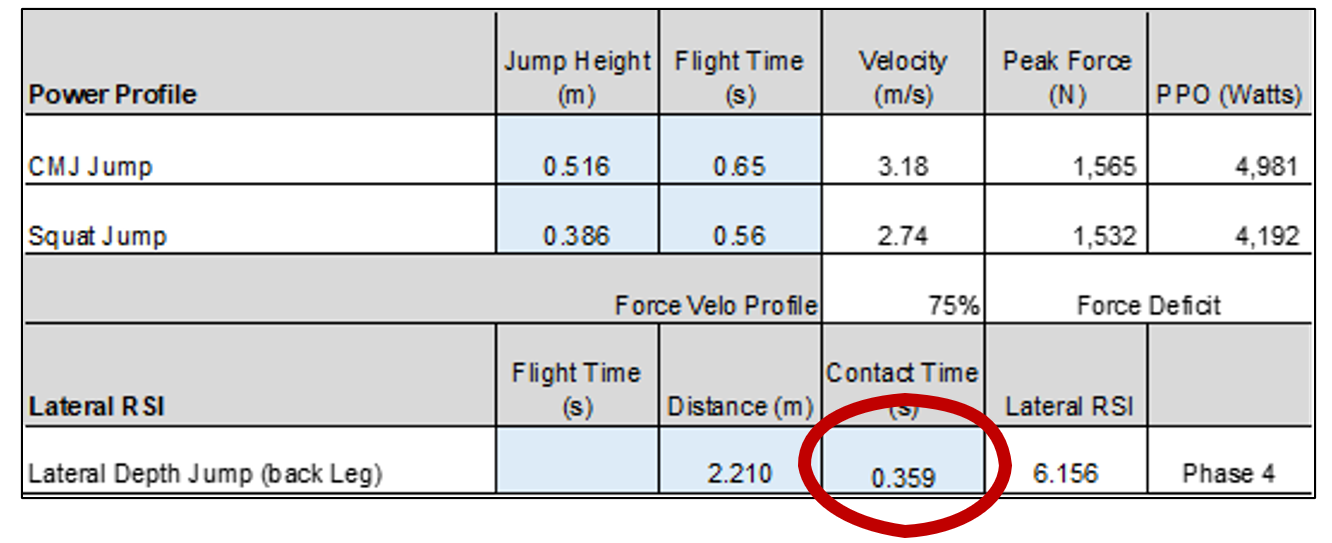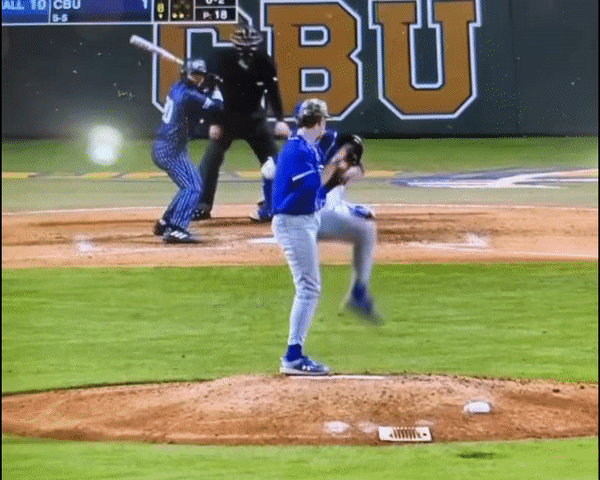
Michael Gillen, Freshman at Seton Hall University, is having a great start to his collegiate career. With 15 appearances and 22.2 innings pitched, he has a .40 ERA, 1.01 WHIP and velocity sitting at 91-93 mph. He initially began training with us back in the fall of 2019 as he was starting his sophomore year at Bergen Catholic high school (at the time according to PBR he was sitting 78-80). Fast forward… after graduation he joined the 12-week Summer Throwing Program in preparation for his collegiate career. When he started the summer program, his goals included cleaning up pitching mechanics, improving his velocity and overall pitching arsenal.
His summer program began with a 3 ½ hour initial assessment, which included the following:
-
- Video analysis and motion capture analysis
- Movement screen
- Strength and power testing
Following his assessment, we assembled a comprehensive 12-week plan, some of which was for the weight room and some for inside the nets to help him prepare for his freshman year.
Video Analysis and Motion Capture Analysis
Every athlete in our summer program is put through a video and motion capture assessment. The analysis covers over 60 different disconnects, from arm action to trunk movement to lower half movement patterns. It leaves no stone unturned, especially when it comes to metrics that generally can’t be seen by the naked eye. With pitching mechanics, more often than not, issues later in the delivery are created by disconnects that happen earlier and Michael was no exception.
Video Analysis – The review highlighted a couple areas that Michael could improve his mechanics.
-
- Drifting – The purpose of weight shift is to initiate the movement of the COM down the mound in order to better apply force in a linear direction once the drive/rotation phase begins. With many pitchers, the old drop and drive can cause the pitcher to play catch-up throughout the rest of the delivery, creating command issues as well as killing momentum into foot plant (FP).
- Insufficient Pelvic / Glute Engagement and Timing – This disconnect is about the pitcher’s weight distribution on the back leg and foot and appropriate amount of hinge. This is key for maintaining posture into FP and avoiding a push or vaulting off the rubber. The longer we can keep the rear glute engaged, the later we can create lateral force and sequence energy up the chain later in the delivery. Some great single leg strength work along with training with the core velocity belt can go a long way in helping to create a stable foundation to load and better use the lower half.
Motion Capture Analysis – The following is a summary of Michael’s primary disconnects from his mocap report with definitions for each further below:

-
- Insufficient Scap Load – Performing a good scap load helps resist early trunk rotation while maintaining a good trunk stack into foot plant. It’s also a key player in producing good hip and shoulder separation. Michael’s scap load at 19 degrees was on the lower side of the desired range, which more than likely was affecting his ability to get his arm up at foot plant (see Elbow Flexion @ FP below).
- Shoulder ER @ FP (Late Riser) – This disconnect is usually stemming or related to an inefficient scap load. The arm at foot plant should be between 40-75 degrees. If the arm flips up and is still visible (from front) at FP it’s usually late. It can lead to a Forearm Flyout, causing unnecessary stress on the UCL or anterior shoulder. Along with posterior cuff strengthening, we prescribed figure 8 rocker throws to help keep the arm loose while improving his arm path.
- Elbow Flexion @ FP – Forearm Flyout causes unnecessary stress on the UCL and anterior shoulder, while a high degree of elbow flexion shortens the lever arm too much, negatively affecting the shoulder to efficiently lay back. In either case, you often need to go back and clean up any arm action issues prior to this point.
- Pelvic Rotation @ FP – Late pelvis rotation will cause the hips to be too closed (<35 degrees) at FP, making it hard to facilitate rotation. We generally look for the hips to be partially open (35 to 50°) at foot plant. Michael’s results were less than 35 degrees, likely due to starting in a less than stable position at gather, making it difficult to both adequately drift and load.
- Knee Extension Angular Velocity – While this metric was borderline acceptable at 297 d/s, we would consider this on the low side for an athlete of Michael’s strength and throwing caliber.
Movement Screen
At the time of Michael’s assessment, he was 6’3” weighing in at 190 lbs. His weight to height ratio of 2.5x was within the range of 2.5-3.0x for high performance athletes.
A movement screen is often a physical blueprint for what the body can and can’t perform during a delivery. Putting strength aside, many disconnects often come back to topics identified in the movement screen. Michael’s movement screen highlighted a few focal points that we thought needed to be addressed that could be affecting his delivery:
-
- Insufficient single leg stability – One of the big players in his movement screen was insufficient single leg stability. To properly activate the glutes and hinge, as well as keep a firm grip into the ground to ensure a good amount of rotation, you need single leg strength and stability from the start of the delivery all the way to release. This was apparent from Michael’s late pelvis and lower than desired Knee Ext. Angular Velo readings from his mocap.
- Insufficient t-spine extension and mobility and posterior cuff strength – As far as the upper half begins to rotate, lack of t-spine mobility and posterior cuff strength were likely contributors to Michael’s inability to get adequate amount of scap load and ultimately causing a late arm at FP.
Strength and Power Testing
Michael’s strength and power testing were above average, and his Lateral RSI was actually on the high side at 6.2. However, his less then optimal contact time of .359 s led us to believe that his ability to decelerate his front leg was being compromised. This could negatively affect his ability to use his strength in order to better to accept the forces he would encounter on the mound. Combined with his lack of single leg stability was possibly affecting both his ability to post up more efficiently as well as get into better positions.

Update
Michael re-joined us during the winter break before the start of his spring season. In an environment where COVID red-shirts and transfers through the portal have made it difficult for freshman to get mound time, Michael has definitely delivered for Seton Hall. As highlighted earlier, he is having an outstanding start to his collegiate career. After 15 appearances and 22.2 innings pitched, he has a .40 ERA, 1.01 WHIP and velocity sitting at 91-93 mph. This is just the beginning for this guy. The sky is the limit as he progresses with his college career.

By Jake Lebovitch and Nunzio Signore
You live too far to train with us in-house at RPP? You can now train with us on a REMOTE basis.


